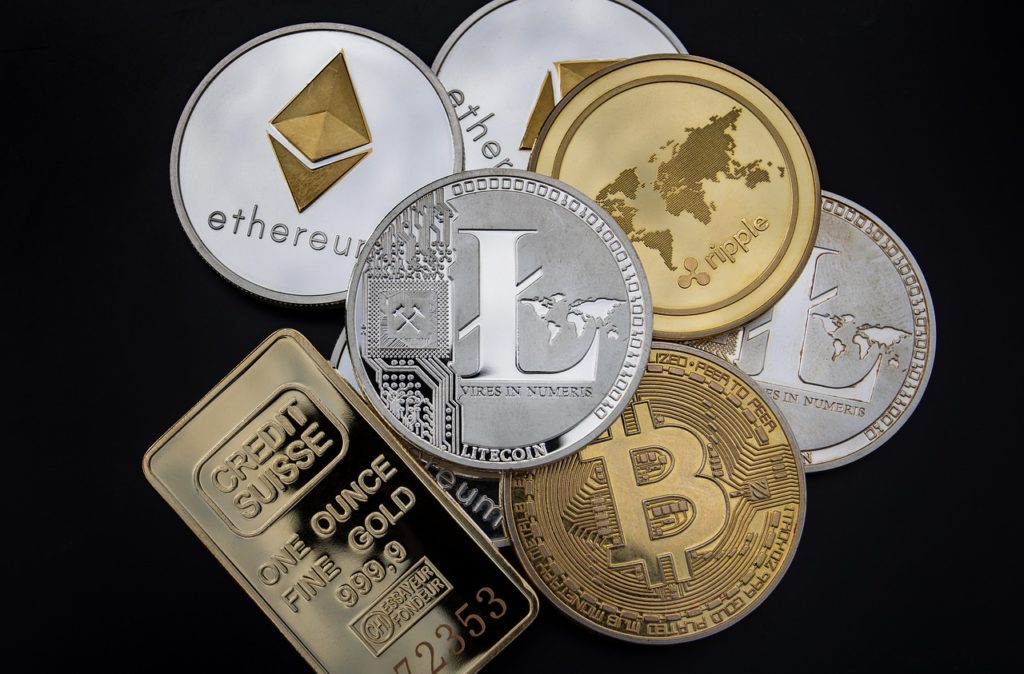Multichain Indexing: The Intriguing Engine Room Powering Web3 Growth In 2024
The burgeoning world of Web3, encompassing decentralized applications (dApps), DeFi (decentralized finance), and play-to-earn gaming, relies heavily on efficient access to vast amounts of blockchain data. This data, spread across numerous blockchains, can be cumbersome and time-consuming to process and query traditionally. Here’s where multichain indexing steps in, acting as the engine room that fuels Web3’s growth by boosting blockchain data processing and query performance.
Multichain Indexing: Unifying the Fragmented Blockchain Landscape
The blockchain revolution has brought forth a diverse and rapidly growing ecosystem. New blockchains emerge constantly, each with its own unique features, functionalities, and vibrant communities. However, this very diversity creates a fragmented landscape, posing a significant challenge for developers and users alike. This is where multichain indexing comes into play, acting as a crucial bridge to unify the blockchain landscape.
Understanding the Problem: Siloed Blockchains and Fragmented Data
Imagine a library where each book is locked in its own vault, accessible only with a specific key. This is akin to the current state of blockchains. Each blockchain operates as a separate system, with its own ledger and data structure. While this fosters innovation and experimentation, it also creates significant hurdles:
- Limited Data Accessibility: Developers building applications that interact with multiple blockchains face the challenge of accessing and querying data from each chain individually. This is a complex and time-consuming process.
- Fragmented User Experience: Users seeking information or interacting with assets across different blockchains need to navigate multiple interfaces and wallets, creating a fragmented and inconvenient experience.
- Hindered Innovation: The lack of a unified view of blockchain data hinders the development of cross-chain applications and functionalities that could unlock the true potential of the blockchain ecosystem.
Multichain Indexing: The Unifying Force
Multichain indexing tackles these challenges by providing a unified platform for indexing and querying data across multiple blockchains. Here’s how it works:
- Crawling the Blockchain Landscape: Multichain indexers employ specialized software to crawl and collect data from various blockchains. This includes transaction data, smart contract interactions, and on-chain events.
- Data Aggregation and Normalization: The collected data is then aggregated and normalized into a single, unified format. This allows developers to query data from different chains using a consistent interface, regardless of the underlying blockchain technology.
- Fast and Efficient Search: Multichain indexing platforms leverage sophisticated indexing techniques to enable fast and efficient searches across the aggregated data. Developers can access specific information or track events happening on different blockchains with ease.
Challenges and Considerations in Multichain Indexing
While the potential of multichain indexing is undeniable, certain challenges need to be addressed:
- Data Completeness: Ensuring comprehensive and up-to-date data indexing across a rapidly evolving landscape of blockchains is a continuous effort. Multichain indexers need to constantly adapt and scale their infrastructure.
- Decentralization vs. Performance: Centralized indexing solutions can offer faster and more reliable performance. However, they raise concerns about censorship and control. Striking a balance between decentralization and efficient data retrieval is crucial.
- Standardization: The lack of standardized data formats across different blockchains can create challenges for data aggregation and normalization. Industry collaboration is needed to establish common data standards for seamless multichain indexing.
Benefits of Multichain Indexing: A Deeper Dive
We’ve established that multichain indexing acts as a unifying force in the fragmented blockchain landscape. But let’s delve deeper into the specific benefits it offers for developers, users, and the overall blockchain ecosystem:
Enhanced Developer Experience:
- Reduced Development Time: Multichain indexing platforms provide a single access point for data from multiple blockchains. This eliminates the need for developers to build and maintain custom indexing solutions for each chain they want to interact with. This translates to significant time savings and allows developers to focus on core functionalities of their applications.
- Simplified Data Management: Multichain indexing takes care of data aggregation, normalization, and querying, freeing developers from these complex tasks. This allows them to focus on building innovative applications and user experiences without getting bogged down in the intricacies of individual blockchain protocols.
- Improved Code Reusability: By providing a consistent interface for querying data across different chains, multichain indexing enables developers to write reusable code. This translates to faster development cycles and more efficient use of resources.
Streamlined User Experience:
- Unified Interface: Users can access and interact with their assets and information across various blockchains through a single platform. This eliminates the need to switch between different wallets and interfaces, creating a more user-friendly and intuitive experience.
- Cross-Chain Visibility: Multichain indexing allows users to gain a holistic view of their activities across different blockchain ecosystems. This can be particularly valuable for users who participate in DeFi (Decentralized Finance) or invest in NFTs (Non-Fungible Tokens) spread across multiple chains.
- Discovery of Cross-Chain Opportunities: By providing a unified view of blockchain data, multichain indexing can help users discover opportunities that span multiple chains. For instance, users can identify arbitrage opportunities or find the best lending rates across different DeFi protocols built on various blockchains.
Unlocking the Potential of Blockchain Technology:
- Cross-Chain Applications: Multichain indexing empowers developers to build applications that leverage the unique strengths of different blockchains. Imagine an application that utilizes the security of one blockchain for asset storage and the fast transaction speeds of another for everyday payments. This opens doors for innovative functionalities and fosters a more interconnected blockchain ecosystem.
- Enhanced Interoperability: By enabling smooth data exchange between different blockchains, multichain indexing paves the way for greater interoperability. This allows for the development of applications that seamlessly interact with assets and functionalities spread across various blockchain networks.
- Data-Driven Insights: The aggregated data from multichain indexing can be used to generate valuable insights into the overall health and activity of the blockchain ecosystem. This data can be used by developers, researchers, and investors to make informed decisions and identify new trends within the blockchain space.
In conclusion, the benefits of multichain indexing go beyond simply unifying data access. It empowers developers, streamlines user experiences, and unlocks the true potential of blockchain technology by fostering innovation, interoperability, and data-driven insights. As the blockchain landscape continues to evolve, multichain indexing will play a critical role in shaping a more interconnected and user-friendly future.
Also, read – Web3 Marketing: An Intriguing Paradigm Shift in Brand-Consumer Relationships In 2024
The Future of Multichain Indexing: Building a Bridge to a Multi-Chain World
As Web3 marches forward and the blockchain ecosystem explodes with ever-more specialized chains, multichain indexing stands poised for a pivotal role. Here’s a glimpse into the exciting possibilities that lie ahead:
Evolving to Meet the Demands of a Multi-Chain Future
- Scalability and Efficiency: Multichain indexing solutions will need to continuously adapt and scale their infrastructure to keep pace with the ever-growing number of blockchains and the increasing volume of data being generated. This will involve advancements in distributed indexing protocols and leveraging Layer 2 scaling solutions.
- Focus on Decentralization: While some centralized indexing solutions offer faster performance, the future lies in fostering a more decentralized approach. This will involve the development of secure and reliable incentive structures to attract and reward node operators who contribute to a distributed indexing network.
- Standardization and Interoperability: Collaboration between blockchain developers, indexing service providers, and industry bodies will be crucial for establishing common data standards. This will ensure seamless data exchange across different indexing platforms and foster greater interoperability within the entire blockchain ecosystem.
Unlocking the Potential of a Unified Blockchain Landscape
- Cross-Chain DeFi: Multichain indexing will be the backbone of a future where DeFi applications seamlessly interact with assets and protocols across various blockchains. This will enable users to find the best rates, optimize their strategies, and access a wider range of financial services within a unified DeFi ecosystem.
- The Rise of the Multichain Metaverse: Imagine a virtual world where your avatar and its possessions can seamlessly move between different blockchain-powered metaverses. Multichain indexing will play a crucial role in enabling this vision by providing the infrastructure for verifying ownership and facilitating cross-metaverse interactions.
- Empowering DAOs and On-Chain Governance: Multichain indexing will be instrumental in enabling DAOs (Decentralized Autonomous Organizations) to operate across multiple blockchains. This will allow DAOs to leverage the unique strengths of different chains for governance, treasury management, and application development.
The Impact on Developers and Users:
- Abstraction and Simplification: Multichain indexing will continue to mature, offering developers a higher level of abstraction from the underlying blockchain complexities. This will allow them to focus on building innovative applications without getting bogged down in the intricacies of individual chain protocols.
- Enhanced Security and Transparency: Multichain indexing can play a vital role in enhancing security by enabling developers to track suspicious activity across different blockchains. Additionally, it fosters greater transparency within the blockchain ecosystem by providing a consolidated view of on-chain activity.
The Future is Multichain: A Collaborative Effort
The future of multichain indexing hinges on a collaborative effort between developers, indexers, and the broader blockchain community. By addressing the challenges, fostering innovation, and prioritizing a decentralized future, multichain indexing has the potential to become the cornerstone of a truly unified and interoperable blockchain landscape. This will not only unlock the true potential of Web3 but also pave the way for a more innovative, secure, and user-friendly future for everyone involved.
Conclusion
Multichain indexing is the invisible force propelling Web3 forward. By breaking down blockchain silos and enabling efficient data processing, it empowers developers, fuels innovation, and paves the way for a more seamless and rewarding user experience in the decentralized world. As multichain indexing continues to mature, it will play a pivotal role in unlocking the full potential of Web3 and shaping the future of the internet.
Stay informed with daily updates from Blockchain Magazine on Google News. Click here to follow us and mark as favorite: [Blockchain Magazine on Google News].
Get Blockchain Insights In Inbox
Stay ahead of the curve with expert analysis and market updates.
latest from tech
Disclaimer: Any post shared by a third-party agency are sponsored and Blockchain Magazine has no views on any such posts. The views and opinions expressed in this post are those of the clients and do not necessarily reflect the official policy or position of Blockchain Magazine. The information provided in this post is for informational purposes only and should not be considered as financial, investment, or professional advice. Blockchain Magazine does not endorse or promote any specific products, services, or companies mentioned in this posts. Readers are encouraged to conduct their own research and consult with a qualified professional before making any financial decisions. The featured image used is just a creative depiction of the title and it does not intend to hurt sentiments of any person or institution. If it hurts anyone sentiments, please do not hesitate to reach out to Blockchain Magazine.

 Bitcoin
Bitcoin  Ethereum
Ethereum  XRP
XRP  Tether
Tether  Solana
Solana  Dogecoin
Dogecoin  USDC
USDC  Cardano
Cardano  Lido Staked Ether
Lido Staked Ether  TRON
TRON  Chainlink
Chainlink  Avalanche
Avalanche  Wrapped stETH
Wrapped stETH  Sui
Sui  Wrapped Bitcoin
Wrapped Bitcoin  Toncoin
Toncoin  Stellar
Stellar  Hedera
Hedera  Shiba Inu
Shiba Inu  WETH
WETH  Polkadot
Polkadot  LEO Token
LEO Token  Litecoin
Litecoin  Bitcoin Cash
Bitcoin Cash  Bitget Token
Bitget Token  Hyperliquid
Hyperliquid  Uniswap
Uniswap  Official Trump
Official Trump  USDS
USDS  Wrapped eETH
Wrapped eETH  Pepe
Pepe  NEAR Protocol
NEAR Protocol  Ethena USDe
Ethena USDe  Aave
Aave  Aptos
Aptos  Internet Computer
Internet Computer  Monero
Monero  WhiteBIT Coin
WhiteBIT Coin  Ethereum Classic
Ethereum Classic  Ondo
Ondo  Cronos
Cronos  POL (ex-MATIC)
POL (ex-MATIC)  Mantle
Mantle  Render
Render  Dai
Dai  MANTRA
MANTRA  Algorand
Algorand  Artificial Superintelligence Alliance
Artificial Superintelligence Alliance 




